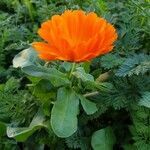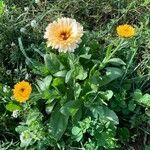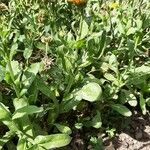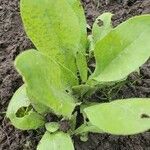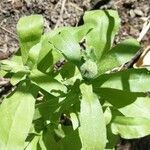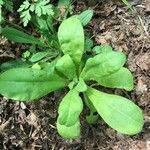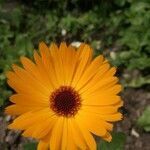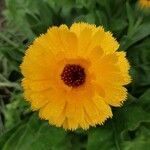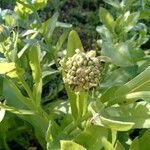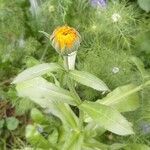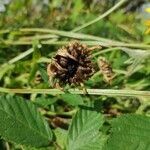Erect to ascending, basally ±woody, ±perennial herb, (20–) 25–50 (–60) cm high, much-branched, densely glandular-hairy. Leaves oblanceolate, narrowly obovate, oblong or ±spathulate, (3–) 5–10 (–15) cm long, (1–) 1.5–4.5 (–6) cm wide, basally attenuate, entire or repand-dentate, acute to obtuse. Capitula solitary, usually 2.5–5 cm diam.; peduncle 5–10 cm long; involucre biseriate; bracts lanceolate or oblong-lanceolate, (0.8–) 1.0–1.5 cm long, 3.5–4 mm wide, acute, glandular and simple-hairy. Ray florets usually more than 30, 2–3 (–4)-seriate; ligules narrowly oblanceolate, 2–3.5 cm long, apically 3-fid, pale yellow to golden orange. Disc florets 3–5 mm long, yellow to orange. Achenes polymorphic, with or without an outermost row of incurved, rarely patent fruits; outer achenes 2–2.5 cm long, shortly beaked, alternating with cymbiform, much shorter achenes; inner achenes smaller, curved, wrinkled.
Herbs, annual, 20-75 cm tall, usually branched from base, green, ± glandular pubescent. Basal leaves oblong-obovate or spatulate, 15-20 cm, margin entire or remotely denticulate; stem leaves oblong, oblong-lanceolate, or oblong-obovate, 5-15 × 1-3 cm, ± amplexicaul, margin inconspicuously repand-denticulate, apex obtuse, rarely acute. Capitula 4-5 cm in diam.; phyllaries lanceolate or oblong-lanceolate, outer slightly longer than inner, acuminate. Ray florets yellow or orange, ca. 2 × as long as involucre, lamina up to 4-5 mm wide. Disk florets with triangular-lanceolate lobes. Achenes curved, yellowish or brownish, outer half-curved, often aculeate rostrate at apex, lateral-winged ridge irregularly rugose. Fl. Apr-Sep, fr. Jun-Oct.
Leaf blades 3–12(–18+) cm × 10–30(–60+) mm. Peduncles 5–8(–12+) cm. Phyllaries 12–40+, (8–)10–12+ mm. Ray florets 30–50(–100+); corolla laminae 12–20+ mm. Disc florets (30–)60–150+; corollas (4–)5–6+ mm. Cypselae 9–15(–25+) mm. 2n = 14, 32.
An bushy annual herb. It grows 30-70 cm high and 30-45 cm wide. The leaves are spoon shaped or sword shaped. The flower heads are daisy like. They can be 10 cm across. Flowers are yellow or orange. There are cultivated varieties.
